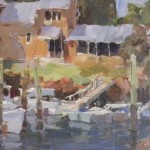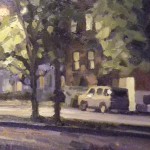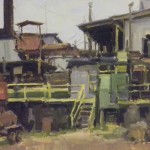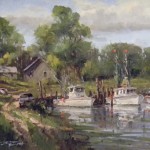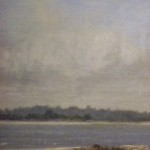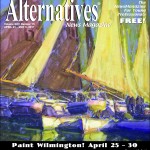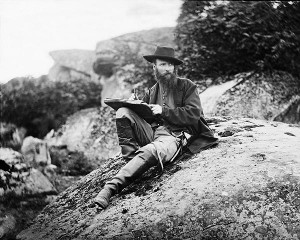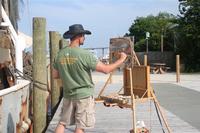“If I could say it in words, there would be
no reason to paint.”
……………………………..– Edward Hopper
Please Note: This Event Has Past.
Paint Wilmington was an annual invitational that brought together artists of disparate visions and styles – with a love of landscape in common. On this page you’ll find a selection of paintings from the 2011 event as well as a few videos and a lot of links to more painting images and information.
Click on image to enlarge. They’re big – it takes a bit.
Click on Artist’s name for more information on that artist.
|
.
.
.
.
.
.
PW 2011 Midday Presentation Schedule
Monday, April 25 – Robert Isley and Tim Bell
Tuesday – Robert Hagberg and Ken DeWaard
Robert H. will give a talk on the effective use of photography for the fine art painter. Ken will give us a painting demonstration with questions welcome.
Wednesday – Cindy Baron and Jerry Smith
Cindy and Jerry are looking for painting reference they both agree on to each paint, talk, and field your questions.
Thursday – John Poon and Steve Songer
John and Steve are putting together a slide show of paintings to talk about what is successful in those paintings – what makes them work.
Friday – Gavin Brooks and Perry Austin
Gavin is working on completing a film on painting. If she finishes that film, we’ll see that. If not, the sky’s the limit. Perry can teach and entertain us all while painting and story-telling (with one hand tied behind his back).
All are remarkable painters, teachers, and people. Even if you have to pick just one, you can’t go wrong!
.
.
.
“Choose only one master…Nature.” – Rembrandt van Rijn
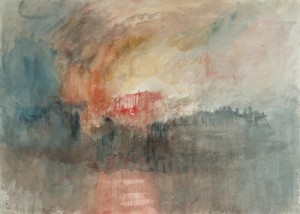
JMW Turner 1775-1851 watercolor sketch from the 1834 fire that destroyed the complex of buildings housing Commons and Lords
Plein Air
“Plein air” painting is simply painting outside, and has been performed for centuries as a way to capture a scene prior to the advent of photography and as a means to develop a quick eye – to see the essentials of a composition quickly, noting them often with lively stroke and color that when translated, in the studio, to a larger canvas can lose that vitality in search of perfection.
Paintng outdoors has always been a critical part of learning the craft of painting, but plein air movements such as the one we have been moving through in recent years as well as the Impressionists (of many countries) a century ago are often a response to new non-human, mechanical practices.
Art moves in the pendulum swing from sleek, smooth seemingly untouched painting surfaces of Ingres to the heavily laden brushwork of Van Gogh and then on to the abstracted forms of an artist’s inner being represented in drips and pours and solid fields of color to an appreciation of the outer world, the landscape.
Although the new convenience of lead tubes to hold paint is often credited for the appearance of the French Impressionists in particular, the dehumanizing of the Industrial Revolution was felt throughout the developed world of the late 1800’s and was responded to in art with brilliant colors and a brush stroke that could only be hand-made from Argentina to Russia. While the progress of factories and their rows of worker tenements spread over the countrysides, a new respect for the landscape emerged as well as a sentimentalized view of the peasantry.
Our current plein air movement could well be the reaction to both the over-development of a disappearing landscape and the non-communication of Modern and Post-Modern art, providing the viewer an image that stands on its own without the need for a ten page explanation of what the artist was intending – and that written by a curator – an image that communicates the shared human experience of beauty.
“The artist is nothing without the gift, but the gift is nothing without work.” -Emile Zola
.
.
.
.
.
.
To sign up for email announcements, please fill in the following information. Thanks!
.
.
.
.
.
.


